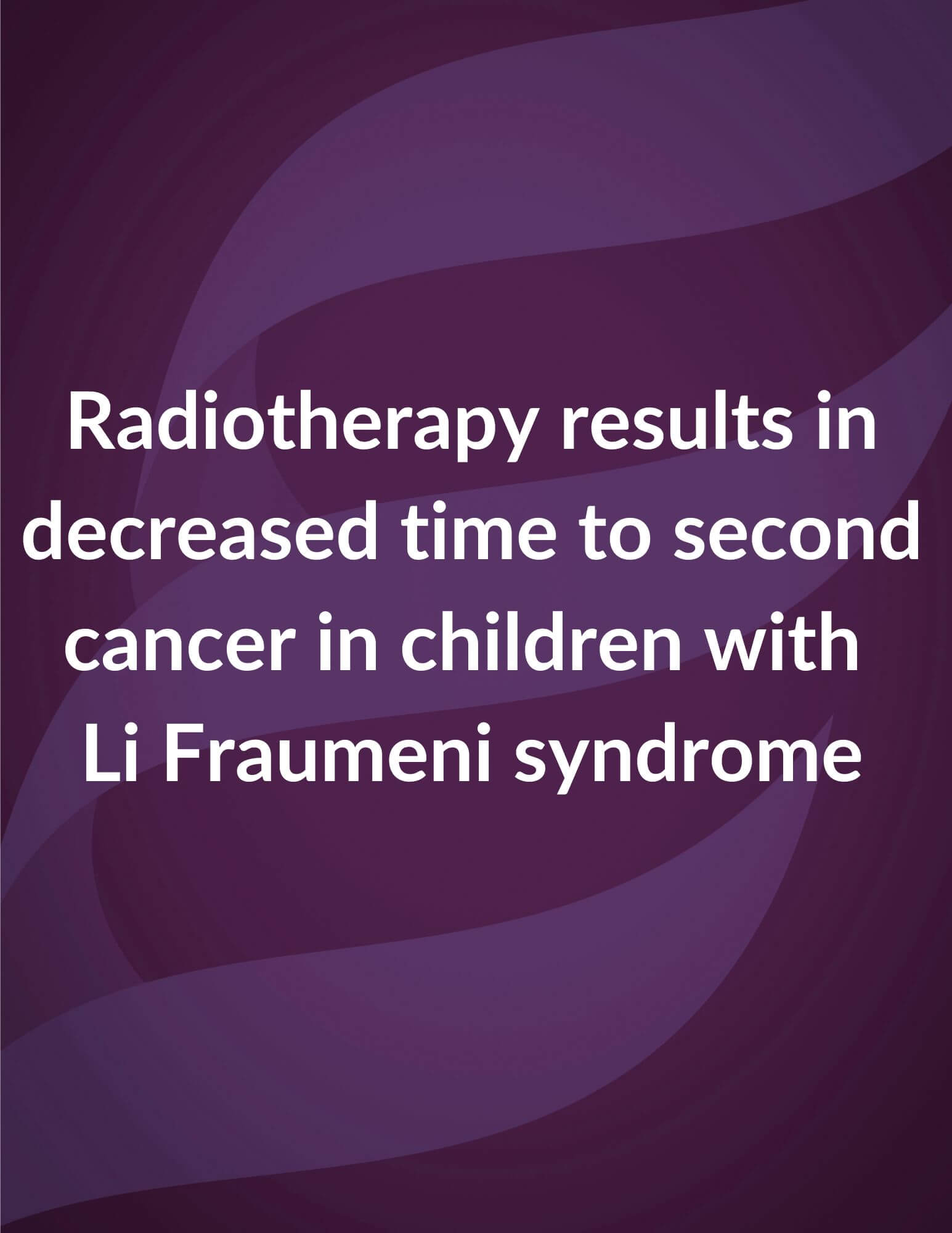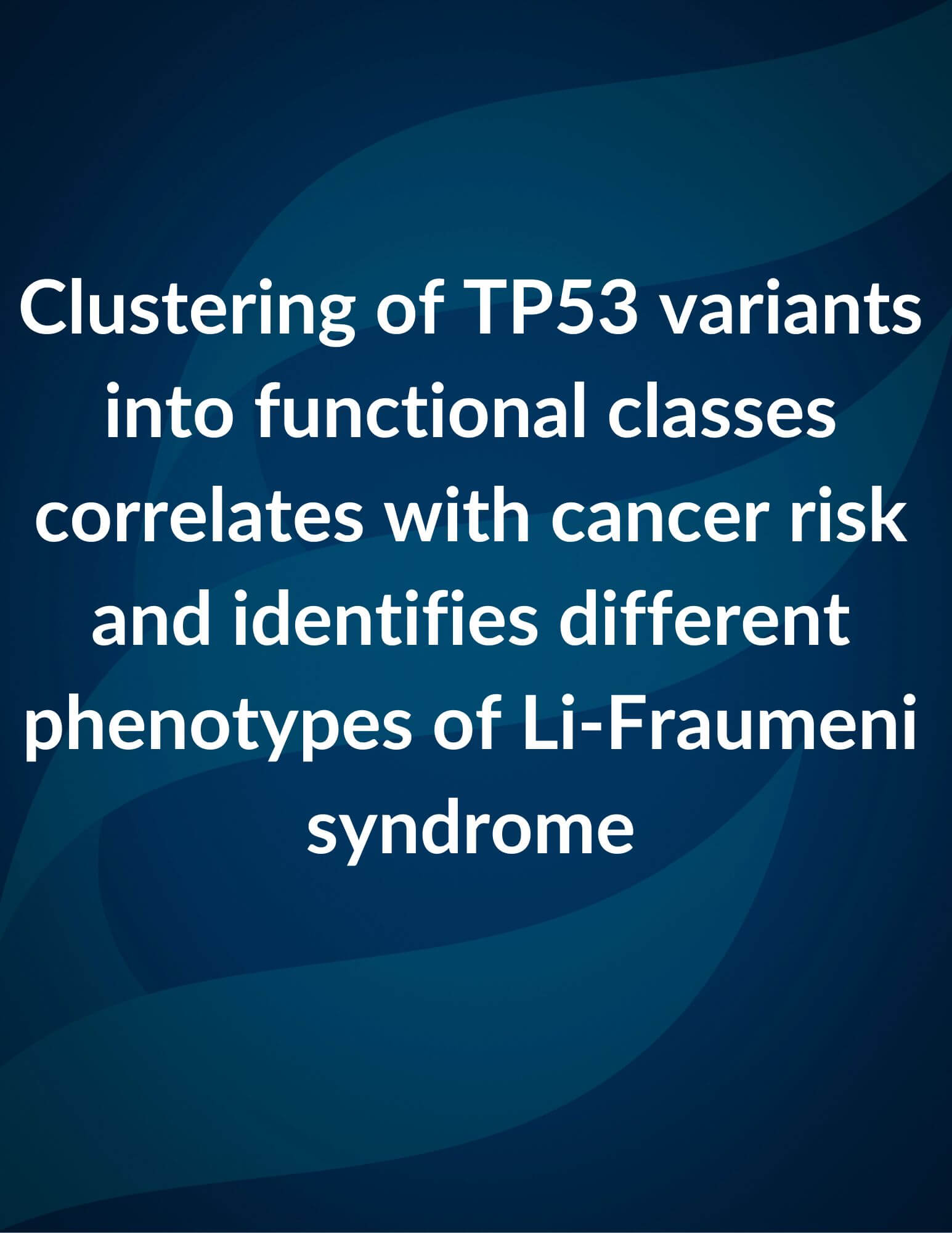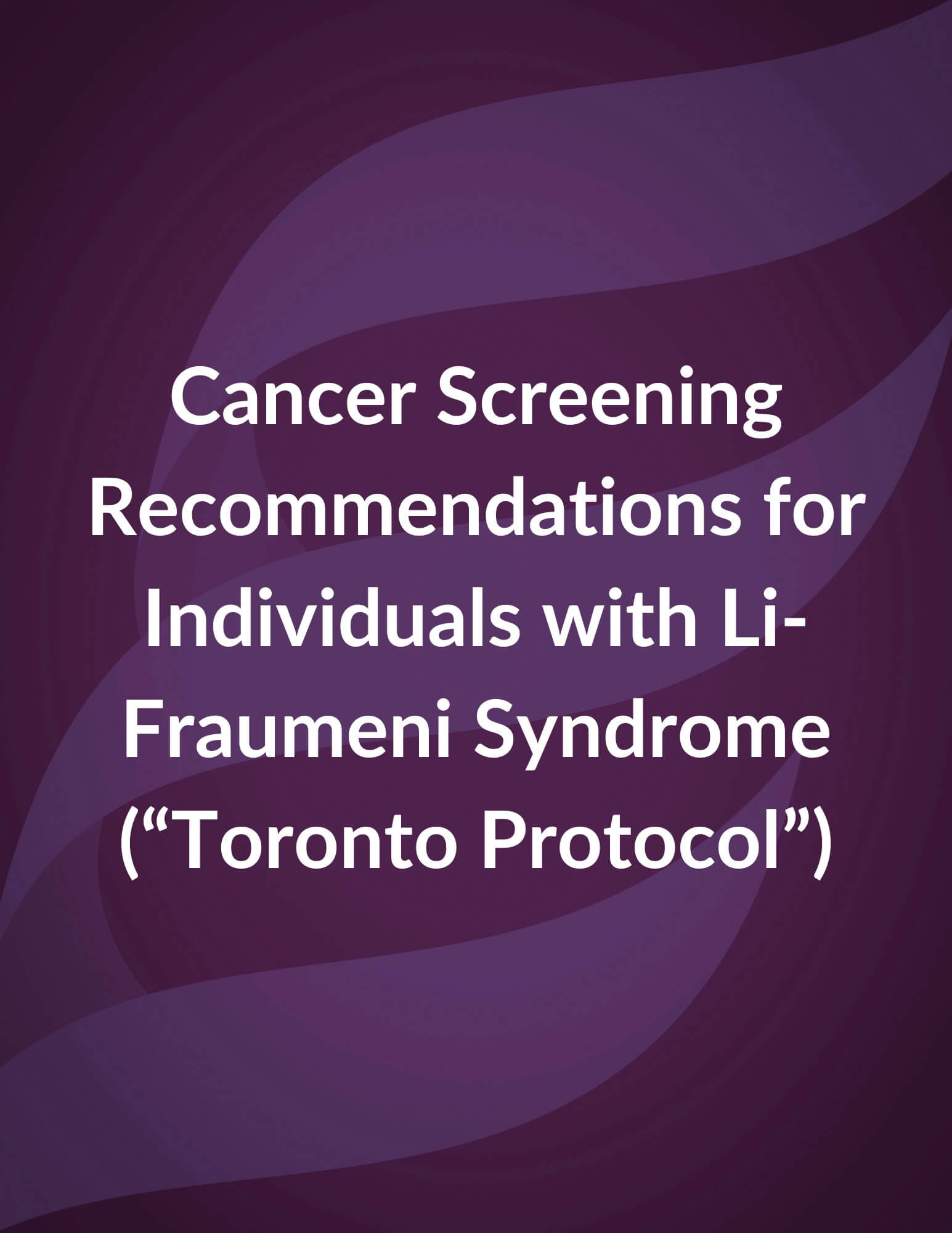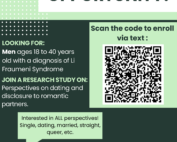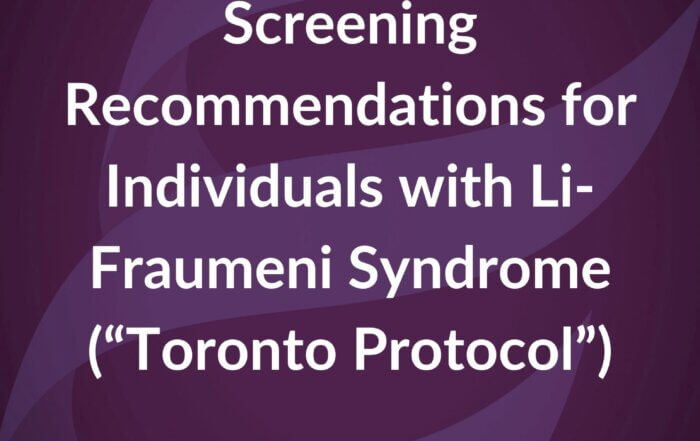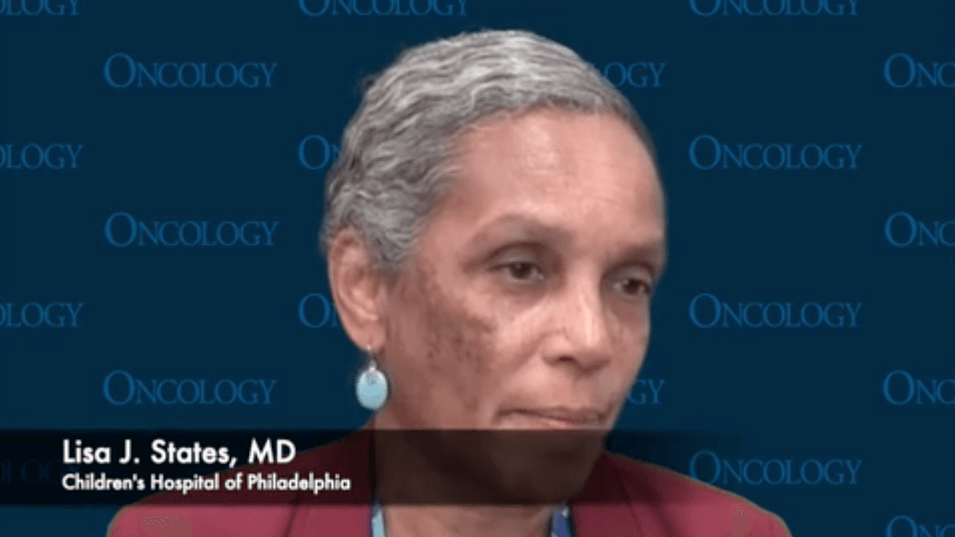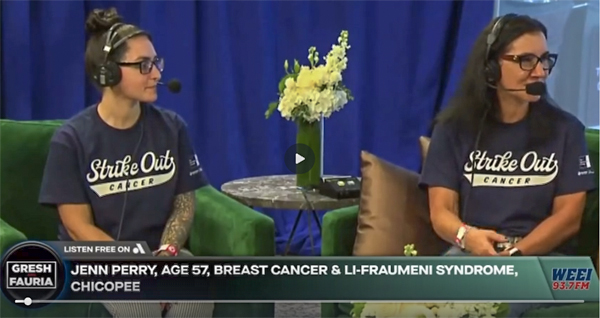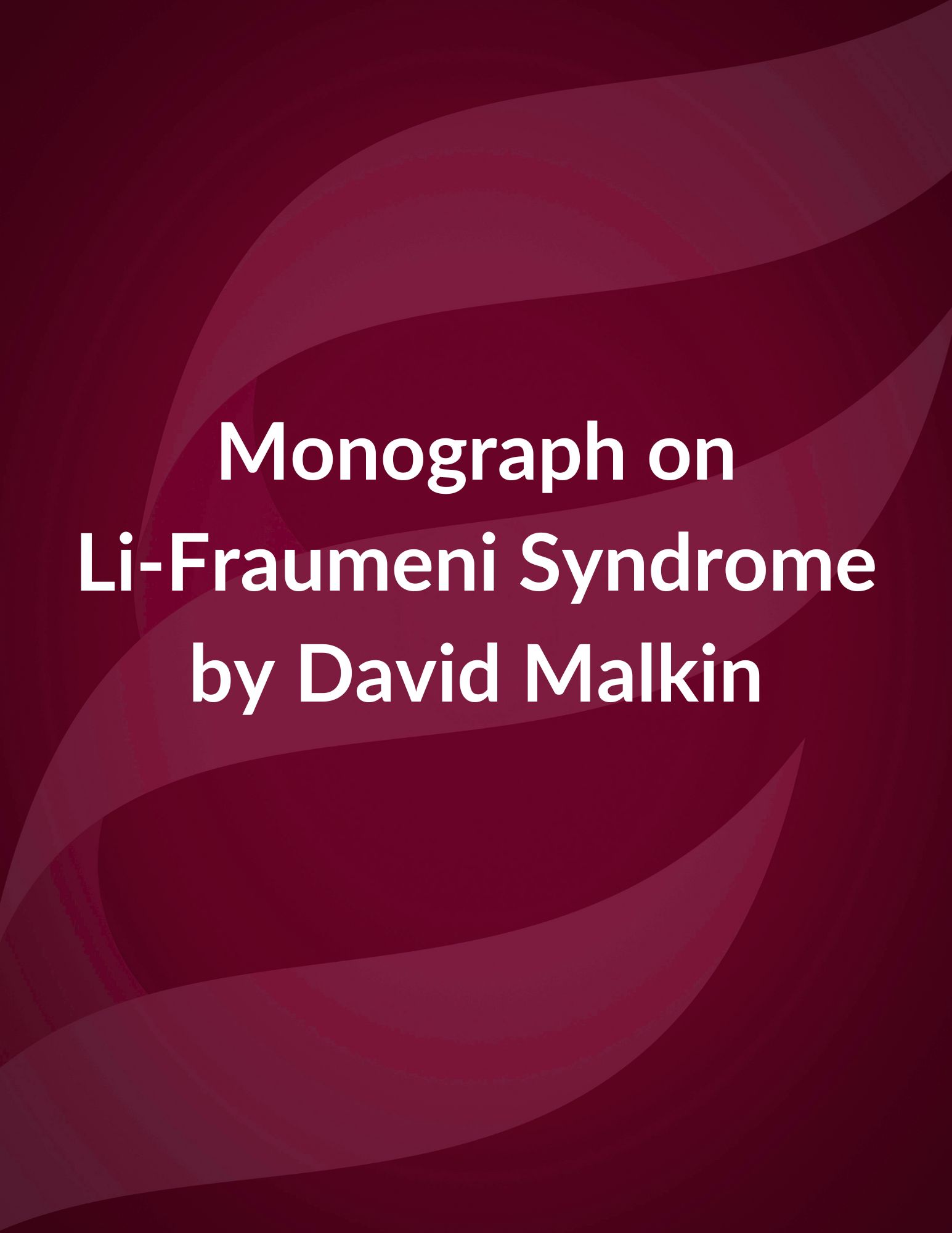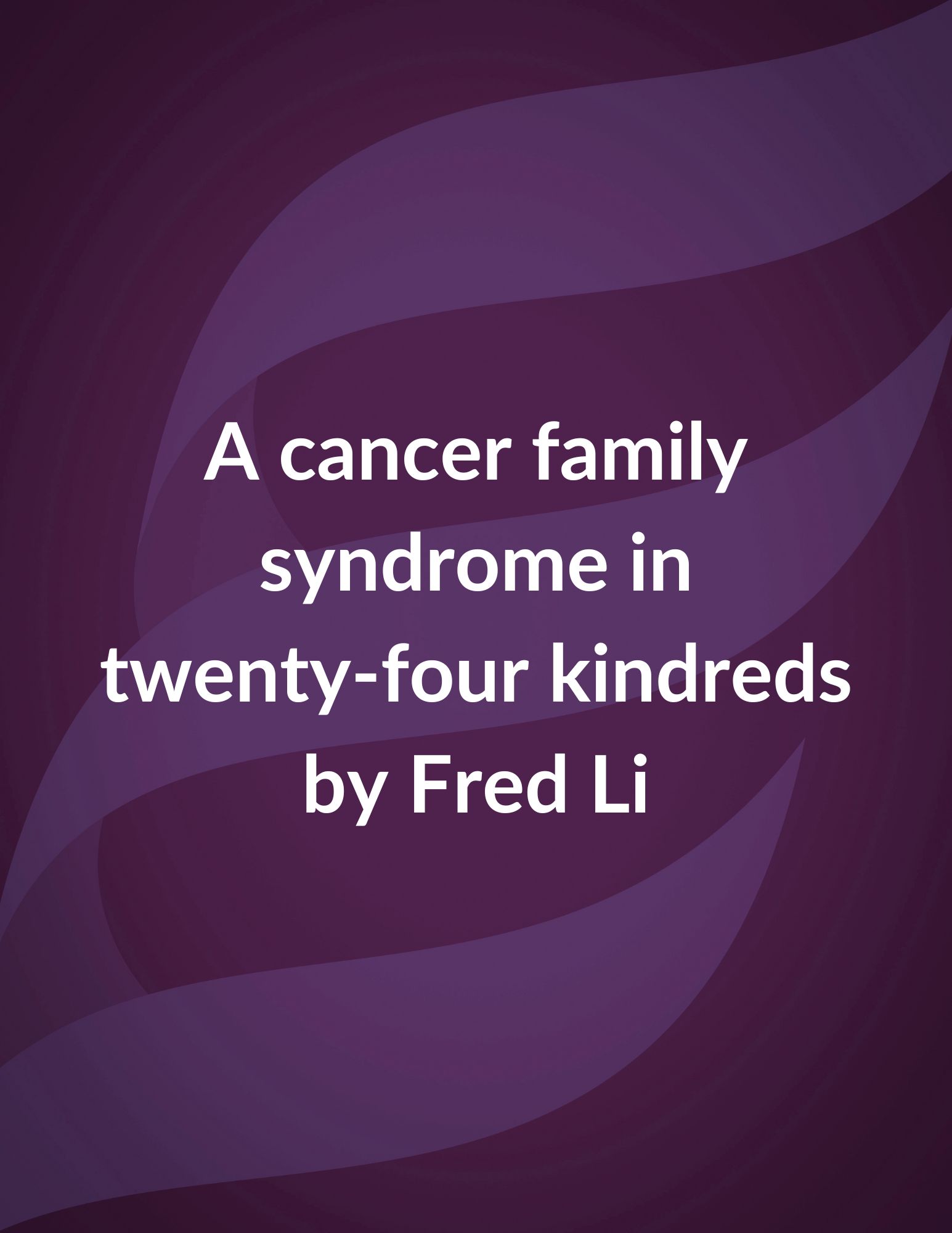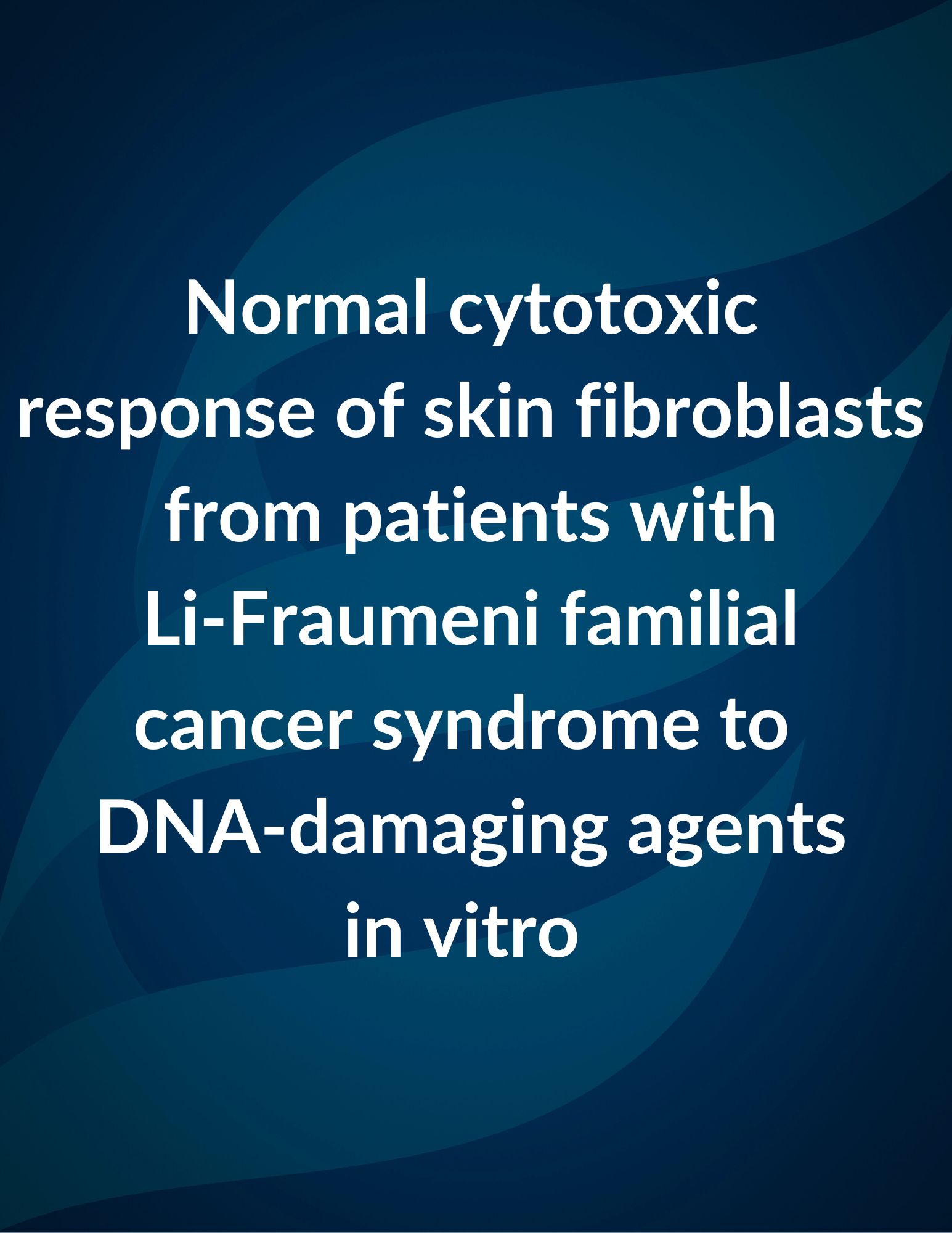Radiotherapy results in decreased time to second cancer in children with Li Fraumeni syndrome
UK researchers conducted a retrospective case-series study of four children diagnosed with solid cancers at age 16 or younger, aiming to assess
Clustering of TP53 variants into functional classes correlates with cancer risk and identifies different phenotypes of Li-Fraumeni syndrome
High resolution clustering of TP53 variants into functional classes correlates with cancer risk among germline variant carriers and identifies different phenotypes of
Cancer Screening Recommendations for Individuals with Li-Fraumeni Syndrome (“Toronto Protocol”)
In October 2016, the American Association for Cancer Research organized a meeting with international experts on Li-Fraumeni Syndrome (LFS) to review the
New Study: Navigating Dating & Relationships with LFS
Northwestern University is conducting a groundbreaking study focused on understanding patient perspectives on dating and disclosure to romantic partners
Additional cancer tumor types added to the Genetic Risk Assessment Guidelines
Breast, ovarian, pancreative, and prostate cancer have been added to the National Comprehensive Cancer Network Genetic/Familial High-Risk Assessment Guidelines
Benefits of Liquid Biopsy
CancerNetwork, an arm of the prestigious journal Oncology, joined LFSA at the 7th International LFS Association Symposium to report
Potential of Metformin and LFS
CancerNetwork, an arm of the prestigious journal Oncology, joined LFSA at the 7th International LFS Association Symposium to report
Update on Cancer Screening Recommendations for Individuals with Li-Fraumeni Syndrome
Just published by American Association for Cancer Research (AACR) is the updated version of the “Toronto Protocol,” the widely recognized screening recommendations for
Radiotherapy results in decreased time to second cancer in children with Li Fraumeni syndrome
UK researchers conducted a retrospective case-series study of four children diagnosed with solid cancers at age 16 or
Clustering of TP53 variants into functional classes correlates with cancer risk and identifies different phenotypes of Li-Fraumeni syndrome
High resolution clustering of TP53 variants into functional classes correlates with cancer risk among germline variant carriers and
Cancer Screening Recommendations for Individuals with Li-Fraumeni Syndrome (“Toronto Protocol”)
In October 2016, the American Association for Cancer Research organized a meeting with international experts on Li-Fraumeni Syndrome
Whole Body MRI Anxiety
A unique aspect of the LFSA International Symposium is the intersection of LFS families among globally renowned medical and scientific experts. Lisa J. States,
Another survey opportunity: Risk-reducing mastectomy decision making process for adolescents and young adults with Li-Fraumeni Syndrome
Another invitation to participate in a study about the risk-reducing mastectomy decision making process for adolescents and young adults with Li-Fraumeni Syndrome: A team
Jenn Perry on WEEI for Jimmy Fund Telethon
LFSA founder Jenn Perry shares her family's LFS story and what motivates her to advocate for research and advancements to support those impacted by Li-Fraumeni
2011: Monograph on Li-Fraumeni Syndrome by David Malkin
Li-Fraumeni syndrome (LFS) is a genetic disorder linked to mutations in the p53 tumor suppressor gene, leading to a wide range of cancers. While p53
1988: A cancer family syndrome in twenty-four kindreds by Fred Li
Researchers analyzed families with a pattern of sarcomas, breast cancer, and other cancers occurring in young patients. They found that cancer developed in an autosomal
1987: Normal cytotoxic response of skin fibroblasts from patients with Li-Fraumeni familial cancer syndrome to DNA-damaging agents in vitro
Researchers tested cells from people with Li-Fraumeni Syndrome (LFS), a genetic condition that increases cancer risk, to see how they respond to DNA-damaging agents

